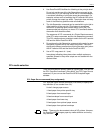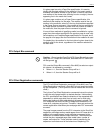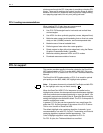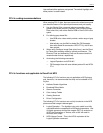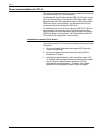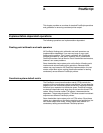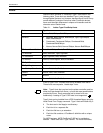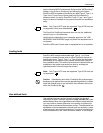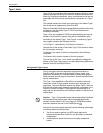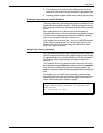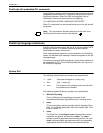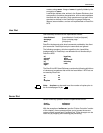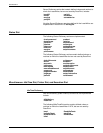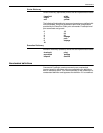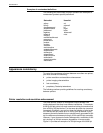
POSTSCRIPT
XEROX DOCUPRINT NPS GUIDE TO USING PAGE DESCRIPTION LANGUAGES 2-3
see the Generic MICR Fundamentals Guide and the “MICR printing””
chapter in the Guide to Configuring and Managing the System.
DocuPrint NPS is capable of processing any legal Type 0, Type 1, or
Type 3 font. Fonts of any of these types may be included in a
document when it is sent to DocuPrint. Type 0, Type 1 and Type 3
fonts may also be installed on the system using the font installation
utility.
Note: Only Type 0 OCF fonts are supported. Type 0 CID fonts are
not supported, even when downloaded.
The DocuPrint PostScript interpreter does not use the “additional
metrics” entry in a font dictionary.
PostScript font substitution error messages appear on the “JOB
MESSAGES AND ERRORS” page only when the requested font is
not present.
DocuPrint NPS uses Courier when a requested font is not available.
Loading fonts
DocuPrint NPS accepts downloaded legal Type 0, 1 or 3 fonts
through the standard means used on other PostScript devices for
downloading fonts. Type 0, Type 1, or Type 3 fonts may be loaded
permanently on the system by the system administrator using the
font installation utility. This method ensures that the desired fonts are
available on the system and saves time later by avoiding the
repeated transfer of fonts through the network.
Note: Only Type 0 OCF fonts are supported. Type 0 CID fonts are
not supported.
Caution: Downloading fonts with a PostScript file is discouraged
because printer performance may be degraded significantly. Instead,
install the desired fonts on the controller, then reference them from
within the PostScript file.
User-defined fonts
User-defined fonts can contain bitmaps or define the shape of
characters through PostScript operators (lineto, curveto, fill). User-
defined bitmap fonts are not portable across different output devices.
You may notice a marked difference in the quality of rendering for
bitmap fonts as printed on different laser printers. The differences are
attributable to device-dependent features such as resolution, shape
of device pixels, and other characteristics. For further information on
these characteristics, see “Scan conversion details” in this chapter.



